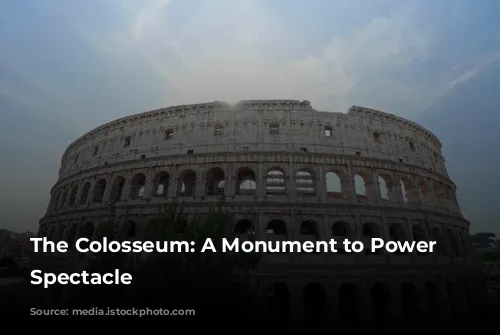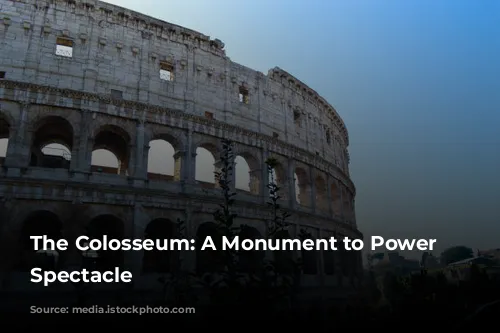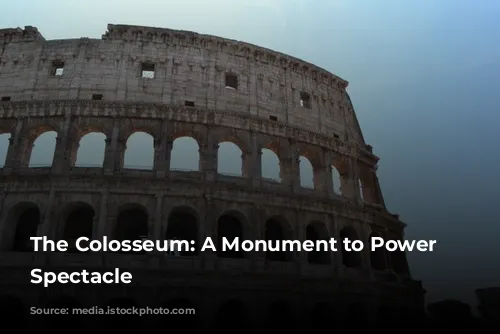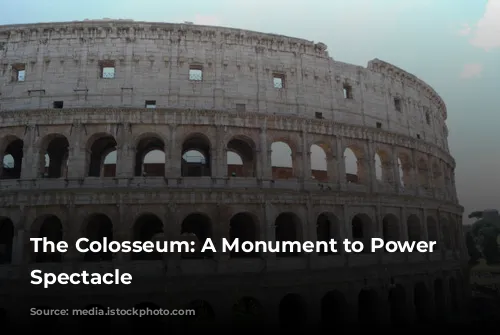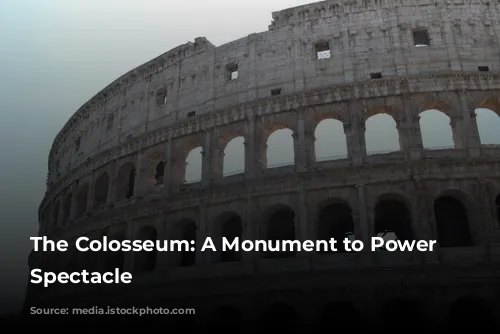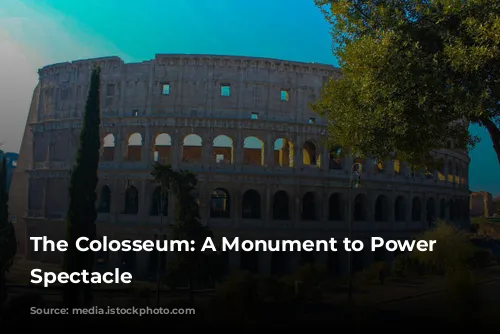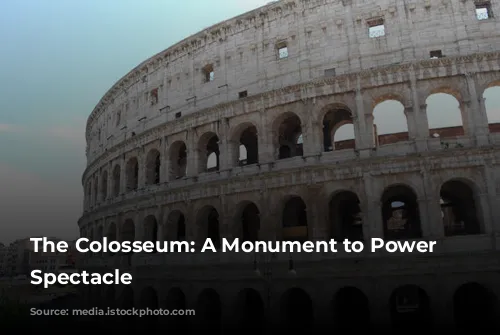The Flavian Amphitheatre, more commonly known as the Colosseum, is a colossal structure that stands as a testament to the power and grandeur of the Roman Empire. This iconic landmark, built by Emperor Vespasian and completed by his son Titus in 80 A.D., is the largest amphitheatre ever constructed in the Roman world.
A Grand Opening
The Colosseum’s inauguration was a spectacle unlike any other, lasting for one hundred days. The crowds were treated to gladiator battles, animal hunts, and even naumachiae – simulated naval battles that filled the arena with water, creating a breathtaking spectacle of naval warfare. Imagine the excitement!
A Name with a Legend
But why do we call it the Colosseum? This name first appeared in a prophecy by Venerable Bede, a medieval monk. He predicted, “Rome will exist as long as the Colosseum does; when the Colosseum falls so will Rome; when Rome falls so will the world.” Perhaps this name derives from the colossal statue of Emperor Nero, standing near the amphitheatre, now lost to time.
A Masterpiece of Roman Engineering
The Colosseum’s architecture is a marvel of engineering. This elliptical structure, built with travertine stone and brick, featured four tiers of seating, each with 80 arches, creating an incredible seating capacity for over 70,000 spectators!
The Romans were masters of the arch, a technique that allowed them to distribute weight effectively. The Colosseum is a testament to this, using arches as a key structural element, much like the Roman aqueducts. It’s incredible to think that this massive structure was built in less than ten years.
A Glimpse into the Past
Today, we only see the skeleton of what was once the grandest arena in the Roman world. Sadly, over the years, the Colosseum has been looted for its materials, leaving only a fraction of its original walls standing.
Imagine the splendor of this once white-stone marvel, decorated with statues, and filled with the energy of thousands of cheering spectators!
A Seat for Everyone
Entrance to the Colosseum was free for Roman citizens, but seating was divided according to social status. The upper tiers were for the common people, while the lower tiers were reserved for the elite. The closest seats to the arena were reserved for senators, priests, and the emperor himself!
A Stage for Spectacle
The arena floor, once a mixture of brick and wood, has long since disappeared, revealing the underground cellars that housed the equipment and mechanisms used for the shows. Imagine gladiators and animals being lifted up into the arena through trapdoors, creating dramatic surprise effects for the crowd.
Gladiators: The Stars of the Show
The gladiators, named after the gladius, the short sword used by Roman soldiers, were often captives of war who were given the choice to fight in the arena or be enslaved. They were also paupers seeking a way to achieve fame and wealth.
These brave warriors were divided into 12 different types based on their weapons and fighting styles. They fought for the cheers of the crowd, for the chance of freedom, and for the emperor’s favor.
The Thrill of the Fight
The audience’s favorite event was the gladiator fights. The gladiators, accompanied by trumpets and drums, would parade into the arena, much like modern-day sports stars. The fights were brutal, with the audience often deciding the fate of the defeated gladiators with a thumbs up or thumbs down gesture.
The smell of blood, burnt flesh, and wild animals permeated the arena, creating an atmosphere unlike any other.
A Symbol of the Past
Despite its violent past, the Colosseum continues to stand as a reminder of the power and spectacle of the Roman Empire. This ancient structure has become a global symbol of Rome and an enduring testament to the ingenuity of Roman architecture.
